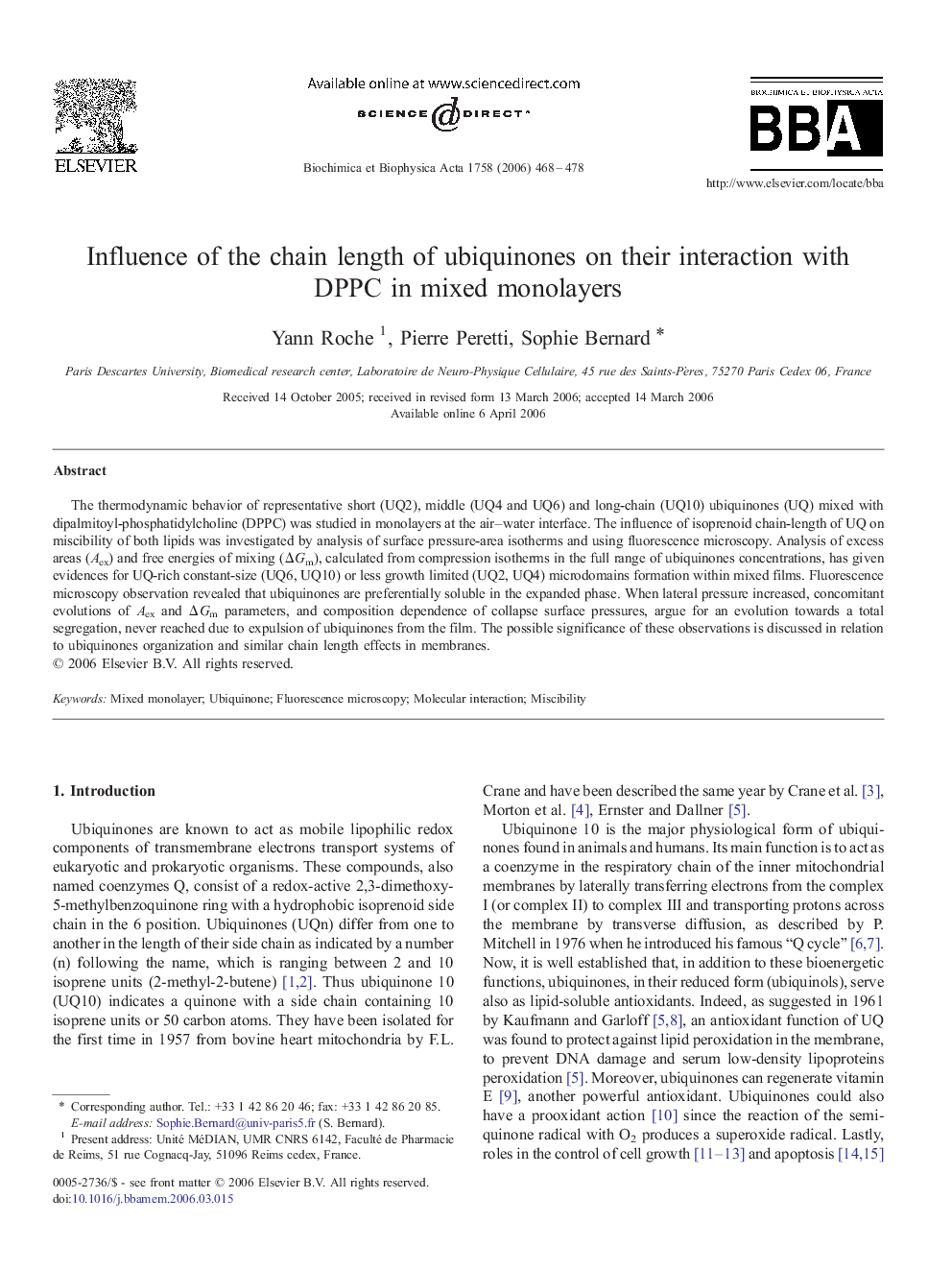| Article ID | Journal | Published Year | Pages | File Type |
|---|---|---|---|---|
| 1946119 | Biochimica et Biophysica Acta (BBA) - Biomembranes | 2006 | 11 Pages |
The thermodynamic behavior of representative short (UQ2), middle (UQ4 and UQ6) and long-chain (UQ10) ubiquinones (UQ) mixed with dipalmitoyl-phosphatidylcholine (DPPC) was studied in monolayers at the air–water interface. The influence of isoprenoid chain-length of UQ on miscibility of both lipids was investigated by analysis of surface pressure-area isotherms and using fluorescence microscopy. Analysis of excess areas (Aex) and free energies of mixing (ΔGm), calculated from compression isotherms in the full range of ubiquinones concentrations, has given evidences for UQ-rich constant-size (UQ6, UQ10) or less growth limited (UQ2, UQ4) microdomains formation within mixed films. Fluorescence microscopy observation revealed that ubiquinones are preferentially soluble in the expanded phase. When lateral pressure increased, concomitant evolutions of Aex and ΔGm parameters, and composition dependence of collapse surface pressures, argue for an evolution towards a total segregation, never reached due to expulsion of ubiquinones from the film. The possible significance of these observations is discussed in relation to ubiquinones organization and similar chain length effects in membranes.
